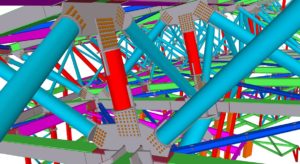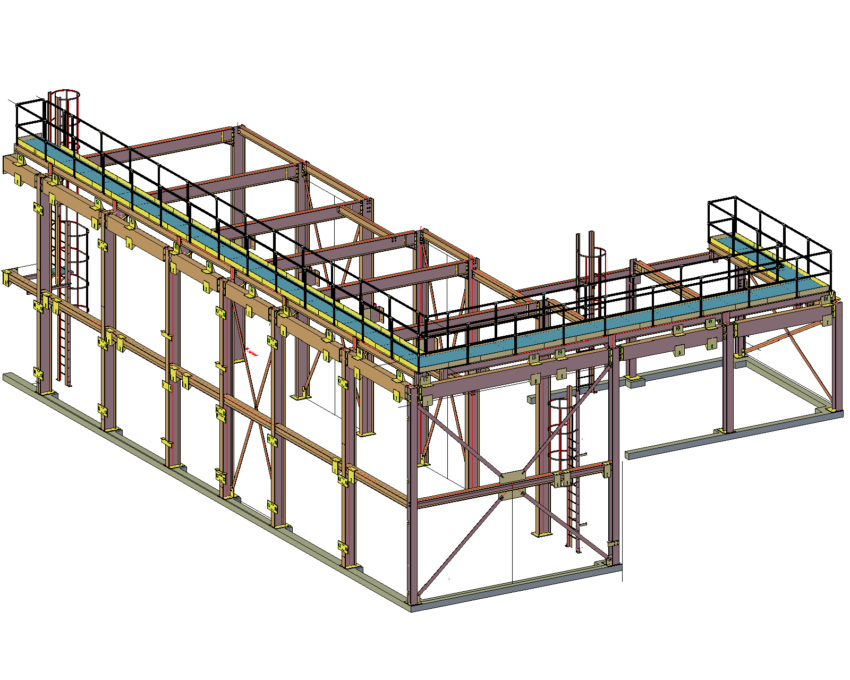Steel Connection Design Services | Steel Structural Connection Design Services | Connection Design Services
Steel connection design is an important part of structural steel projects. Detailing and designing these connections require a lot of knowledge about the various types of connections and the various loads that are applied to them. With this knowledge, a steel connection designer can ensure that all the necessary calculations are done to determine the design strength. of the connection and of the entire structure. This section will go over some of the common types of connections available in steel, including how they are able to meet various loading conditions and how they are designed based on those loads. This is a common type of connection used in steel structures. It is a bolted connection that is made up of several steel bars that are connected to each other by bolts. It has been designed specifically for high strength applications where the load is applied at a large area on the structure and a lot of spacing can be used.-Laminated Connection: A laminated connection is typically used in sections with many more bars that have more load capacity than the previous ones. The laminae are typically spaced apart so they can take in different types.
The pre-bent angle section is bent around the column flange, allowing the connection to be bolted to the column flange and then to the beam or truss. The pre-bent angle section allows sloping and complex configurations of beams and trusses, with no need for cutting or welding before installation. It also reduces the costs associated with having to do these tasks before installation by up to 30%.

This type of connection is used commonly when tension is applied to a beam. It can be used for straight or curved members, but it cannot be used for compression due to its shape. If a bent member has these connections at both ends, then an extra beam must be used. A cantilever is a type of beam that has two supports at each end. It does not act like a compression member, but rather pushes away from the support on one side and pulls towards the other side. A cantilever beam cannot make full contact with a wall or roof in order to provide tension or compression, as it will not be able to return back to its original position after the force is applied. This means that care must be taken when designing or constructing an overhanging beam to ensure that it maintains a consistent load distribution.
For example, some engineers might design a beam with an 84-inch span and three supports, while others may design the same beam with a span of only 80 inches and two supports. To calculate the deflection of a cantilever beam in tension, useformula_1 = formula_2 tan formula_3 (where “formula_1” is the distance from the center of the load to the support, “formula 2” is the span, and “formula 3” is the angle between two beams).Using formula 1 and formula 2, one can find that: formula 1 = 80 inchesand: formula 2 = 84 inches. So, the distance from the center of the load to the support is 20 inches. From formula 3, one can find that:formula 3 = 45 degrees From these calculations, we can determine that a cantilever beam will deflect by 20 inches when loaded in tension.
Structural Engineers who Specialize in Steel Connection Design:
- Shear Connections
- Bracing Connections
- Moment Connections
- Seismic Connections
- Crane Connections
- Truss Connections
- Misc. Connections
- Welded Connections
- Connection Design Sketches
STRUCTURAL ENGINEERING SERVICES
- Design of Steel Structures and Buildings
- Steel Connection Design
- Erection Engineering and Consulting
- Steel Stair and Rail Design
- Steel Shop Drawing Review
- Structural Steel Detailing
- Value Engineering
- Engineered Field Fixes
Structural Engineers who Specialize in Steel Stair Design
- Interior Steel Stairs
- Monumental Stairs
- Exterior Steel Stairs
- Ships Ladders
- Cable Railings
- Free-Standing Stair Towers
- Multiple Landing Stairs
Erection Engineering:
- Site Specific Erection Plans
- Stability Analysis
- Design of Temporary Bracing
- Lifting Plans and Design of Lugs and Spreader Beams
- Truss Evaluation and Reinforcement Design
- Erection Sequencing Plans
- Shoring Towers
Global Detailing and Designing Licensing Map and State Registrations
Alabama, Arizona , Arkansas , Colorado , Connecticut, Delaware , Florida , Georgia, Idaho, Illinois, Indiana , Iowa , Kansas ,Kentucky, Louisiana , Maine ,Maryland , Massachusetts , Michigan , Minnesota, Mississippi , Missouri , Montana ,Nebraska , Nevada, New Hampshire , New Jersey , New Mexico , New York , North Carolina, North Dakota , Ohio , Oklahoma , Pennsylvania , Rhode Island, South Carolina , South Dakota ,Tennessee , Texas , Utah ,Vermont ,Virginia ,Washington, D.C. ,West Virginia ,Wisconsin Wyoming


5 thoughts on “Steel Connection Design Services”